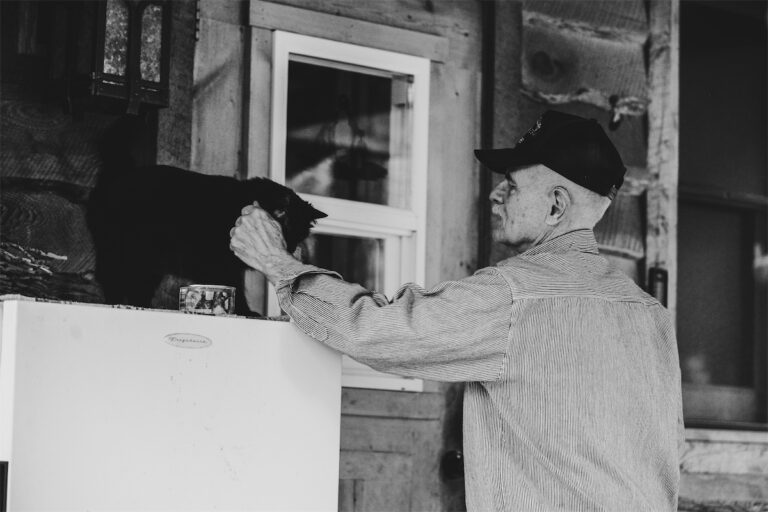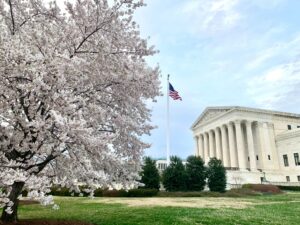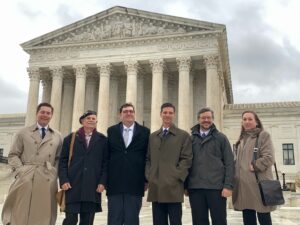The Federalist: How A Cat With A Gunshot Wound Is Bringing Property Rights Disputes Before The Supreme Court

Not many cases involving speeding and littering end up before the U.S. Supreme Court. Fewer still involve shooting a cat. Hardly any will set national policy for property rights disputes involving 620 million acres of federal lands.
On Nov. 30, the Supreme Court heard arguments in just such a case. At issue in Wilkins v. United States is a highly technical question with a simple upshot: whether property owners can take the United States to court when it encroaches on private land.
The case involves Robbins Gulch Road, a dirt lane that cuts across private property on the edge of the Bitterroot National Forest, two hours south of Missoula, Montana. The federal government owns an easement that allows for logging and grazing access, but several years ago, the Forest Service threw the road open to the public. Speeding, littering, poaching, and theft followed. With the help of the Pacific Legal Foundation, two property owners are fighting back; but first, they have to get into court.
Wil Wilkins is a veteran diagnosed with post-traumatic stress disorder. He’s lived in the mountains all his life, including three years on horseback in the Idaho wilderness. Jane Stanton has lived across the road for 30 years. Wilkins and Stanton want the Forest Service to honor the terms of the easement: to limit traffic and patrol and maintain the road. The government claims the power to do as it pleases with the road — and that Wilkins and Stanton waited too long to sue.
The precise issue the Supreme Court will consider is whether the 12-year time limit for bringing claims under the Quiet Title Act is “jurisdictional.” In other words, if there is a dispute about when that time limit started to run, does the court have the power — the jurisdiction — to hold a hearing to consider disputed evidence? Does the government or the property owner bear the burden to show the time limit has passed? And can the government choose to waive the time limit?
Those nuanced questions matter a lot in settling property rights disputes, especially when they involve easements. Encroachment on private property can be subtle and slow, and a dispute might take years to ripen into a genuine conflict. This case shows how that can happen.
Forest Service Opens Road to Public
The prior owners granted the United States an easement for a logging road, and for many years the lazy dirt lane was used occasionally by loggers, ranchers, and others with special permits to use the National Forest. But all that began to change about 10 years ago; traffic from the public increased, and conflicts with property owners ensued. Wilkins’ cat was shot by a passing motorist (the cat survived). So Wilkins and his neighbors reached out to the district ranger. Not to worry, he said, the Forest Service knows it is unclear which roads are open to the public, and, in fact, Robbins Gulch Road is slated to be closed completely after a nationwide travel management planning process. With that good news in hand, Wilkins and his neighbors participated in the process. That took eight years.
At the end of that bureaucratic gauntlet, the promise to close Robbins Gulch Road disappeared. Instead, it was designated open to the public, and the Forest Service put up a sign declaring it open. By the time Wilkins realized he’d been duped, the Forest Service claimed he had waited too long to sue. Wilkins disputed that the time limit had passed, and he offered witnesses and evidence to back up his claim.
Time Limits for Claims
But the lower court never weighed the conflicting evidence about the time limit; the judge held that the time limit deprived the court of jurisdiction. It’s a chicken-and-egg problem: The court doesn’t have to weigh the facts of the case until it has jurisdiction, and it can’t know if it has jurisdiction until it hears the facts of the case.
Congress never intended for these types of cases to be thrown out. When the Quiet Title Act was enacted in 1972, the whole point was to make it easier for landowners to get into court when the government invades their property rights. The Senate committee that created the legislation recognized that “sovereign immunity or the infallibility of the Crown … is not appropriate where the courts are established … to serve the people.” The Department of Justice wasn’t quite so generous and urged Congress to include a time limit; but even then, DOJ recognized that the time limit could be waived and that the government would bear the burden to show it was too late to sue.
Since then, government lawyers have taken a less reasonable tack. The result is a hair-trigger time limit that keeps meritorious property rights disputes out of court, encourages landowners to sue first and cooperate later, and gives the federal government an ace in the hole when disputes do end up in court.
This is the third Pacific Legal Foundation case the Supreme Court has taken in as many years seeking to reopen the courthouse doors to property rights claims. In Knick v. Township of Scott, the court held that property owners could file “takings” claims directly in federal court without first suing in state court, and in Pakdel v. San Francisco, it clarified that a lawsuit can be filed as soon as a state or local government has made a final decision violating a property right. With Wilkins, the court can enforce Congress’s will and give property owners greater access to courts when the federal government encroaches on private land.
This op-ed was originally published at The Federalist on January 9, 2023.








